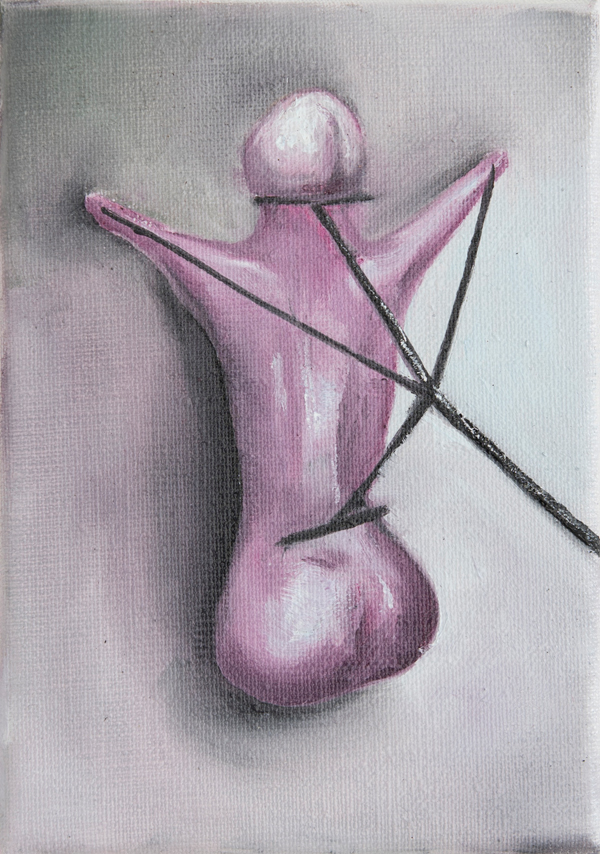Piotr Janas
Foksal Gallery Foundation, Warsaw, Poland
Foksal Gallery Foundation, Warsaw, Poland

‘Culture, and art specifically, has reached such rarefied heights that it’s almost suspended in a vacuum, and in my opinion the only way to go is down.’ That was Polish artist Piotr Janas’s view in an interview from more than a decade ago. Judging from his recent work, his opinion remains the same. Janas made his debut in the early 2000s at a time when many of his peers were engaged with Poland’s rapidly changing social landscape. He chose, instead, to mine seemingly antiquated postwar painting traditions, revisiting local surrealism and pitting abstraction against figuration in painstakingly staged compositions that oozed anguish, anxiety and dark humour.
Things changed with his solo exhibition ‘Last Works’ in Gdansk in 2015. Gone, too, were the pinkish, organic shapes, poked-at or torn-open human organs and bizarre appendages that had characterized his paintings up to that point. Gone as well were the geometric objects that had structured his compositions. Things seemed to have darkened and become mute. In a short video, the artist, sporting only socks and underpants, could be seen performing a ballet dance to George Frideric Handel’s Suite No. 3 in D Minor (1720), tip-toeing on a stretcher bar of one of his own paintings, which he had placed face-down on the floor. Painting had, literally, reached the bottom.

In this sense, Janas’s recent exhibition at Foksal Gallery Foundation in Warsaw was a broken promise. He had not, in fact, made his last works. In ‘52.255494N, 21.074795E’ Janas presented two apparently dissociated groups of paintings: one abstract, the other figurative. In the first room, a massive stain of purple crept across the white background of Untitled (2015), like a pair of mantises conjoined in a violent act. Next to it, in Cleaver (2015), a spill of black chlorinated rubber paint formed an ominous cloud hovering in the corner of a bright interior conjured up by two lines meeting at an angle. Subtle traces of his brush are what Janas has described as a way of keeping an otherwise abstract painting ‘in check’.

Whatever subtle illusion of space existed in these paintings, it was absent in other large canvases in that room: a pure celebration of industrial-grade materials in which siccative, enamel and chlorinated rubber paint were unleashed against each other to create jagged patterns or layers upon layers of matter, with little, if any, sign of brushwork. The most distinct of these was Gravity (2016), a faded pink diptych in which oil paint applied to a canvas covered with transparent lacquer left countless minute vertical traces as it slid down gently to build up at the bottom edge – arguably Janas’s most appealing illustration of his comment on painting’s downward movement.

In the second part of the show, a series of small, predominantly figurative canvases revisited an inventory of his familiar motifs. Here, Janas’s fascination with the corporeal – evident in the representations of bodily organs, scarred or cancerous matter, or what appeared to be the inside view of the large intestine – mixed with renderings of a human head suffocated in a plastic bag (Air, 2016) and a self-portrait with a pronounced moustache. To top it off was a worn black and white postcard of a historical marine painting from a holiday in Montenegro, which Janas had failed to send. Instead, he reworked it into a tacky seascape in brown. In this second group of works – ostentatiously different, at times uncomfortably intimate – the artist presents himself as vulnerable, as if caught in the midst of the curious ballet he had performed on video earlier. ‘There is little to hide,’ he seemed to be saying: something that the show’s title – GPS coordinates of his studio tucked away in Warsaw’s former factory complex – served to confirm.
























